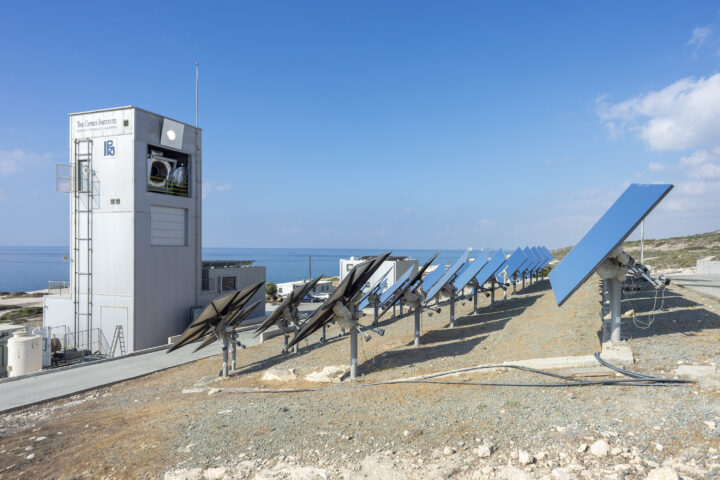Cyprus’ economy is forecast to grow by 3.1% GDP in 2021, but the European Commission warned the country’s fiscal outlook is surrounded by substantial risks in its post-bailout surveillance report.
“The fiscal outlook is surrounded by considerable risks, which are mainly on the downside.
“The main one relates to the future evolution of the COVID-19 pandemic and its adverse effects on the recovery, which may require further fiscal support.”
The European Commission outlines the main findings of the 10th audit mission from 8-18 March 2021 conducted virtually due to Covid-19.
It said after the “sharp contraction” of economic activity in 2020 due to the pandemic and ensuing lockdown measures, with the tourism sector bearing the brunt, a gradual recovery is expected in 2021 and 2022.
Real GDP contracted by 5.1% in 2020. Domestic demand, helped by fiscal measures, was more resilient than external demand.
Tourism plummeted in 2020, with receipts falling by 85.4%.
“In 2021, a modest recovery is expected, with GDP forecast to grow by 3.1%, as the renewed lockdown at the beginning of the year and in April has clouded the short-term growth outlook of the Cypriot economy, and travel restrictions are assumed to be in place until the pace of vaccinations picks up.
In 2022, the recovery is forecast to accelerate to 3.8%, mainly on the back of rising domestic demand and a small positive contribution from net exports.”
The Recovery and Resilience Plan is expected to gradually positively impact the economy by the end of 2021, with the implementation of reforms and investments boosting the country’s growth potential.
Unemployment increased only moderately in 2020 to 7.6% from 7.1% in 2019, helped by income support measures to preserve employment, partly financed by a loan under SURE (Support to mitigate Unemployment Risks in an Emergency).
In 2022, unemployment is expected to decrease to 7.2%.
Downside risks
“Plummeting external demand led to a considerable increase of the current account deficit from 6.3% of GDP in 2019 to 11.9% of GDP in 2020, with only a slight improvement foreseen over the forecast horizon.
“This would further deteriorate the net international investment position of Cyprus. Inflation turned negative in 2020 (-1.1%), dragged down by energy prices, but is expected to pick up in 2021 and 2022.
Downside risks to the growth outlook are significant, mainly regarding the course of the pandemic”.
“On the positive side, swifter-than-expected progress in the EU’s vaccination campaign could be a significant benefit for the tourism sector in Cyprus”, the EC reported said.
It said Cyprus’ sovereign financing and capacity to repay remain sound.
“Throughout 2020, the government built a significant cash buffer in order to secure the necessary firepower to fight the pandemic, support the economy and address possible adverse scenarios”.
“Cyprus’ liquidity position is projected to cover the financing needs of this year.
“Through its bond issuances, Cyprus demonstrated stable market access and favourable financing conditions – supported by the accommodative monetary stance in the euro area.
“With a zero-coupon rate, the most recent international issuance is illustrative (a 5-year bond placement worth EUR 1 bn, which took place in February 2021).
“Looking forward, gross financing needs are expected to decrease in the next two years.
“Furthermore, the public debt ratio is projected to decline amid the economic recovery and as the government plans to use part of the accumulated liquidity to cover upcoming financing needs.”
Although the Commission warned, Cyprus and its debt dynamics remain “sensitive to the volatility of the macro-financial environment and external developments”.
While macroeconomic developments and the policy response to the COVID-19 crisis strongly impacted Cyprus’s public finances in 2020, the fiscal situation is foreseen to improve in 2021 and 2022.
In 2020, the government deficit was 5.7% of GDP, following a surplus of 1.5% of GDP in 2019.
This strong deterioration is explained by lower general government revenue and higher general government spending.
Revenue recorded a drop by around 3% of GDP in 2020, mainly from the lower collection of various taxes, particularly VAT.
Meanwhile, expenditure increased by 4.4% of GDP in 2020, reflecting the introduction of support measures to fight the pandemic and mitigate the adverse socio-economic effects of the economic downturn.
The budgetary impact of the implemented support schemes amounted to 3.6% of GDP in 2020.
For 2021, additional measures have been legislated with an estimated budgetary impact of 3.4% of GDP.
While the government debt-to-GDP ratio increased significantly in 2020 to 118.2% of GDP, it is projected to resume a declining path this year on the back of the economy’s recovery.
“The continuity of government’s fiscal policy to counter the crisis is crucial, and a premature withdrawal of fiscal measures could negatively affect the economic situation.
“In addition, contingent liabilities – in particular related to the financial sector – could materialise, with a further adverse fiscal impact.
“Higher than-estimated costs related to the recently reformed National Health System could also affect the fiscal outlook in the medium and long run.”
Banks
According to the report, banks made further progress in reducing non-performing loans (NPLs), but important challenges remain in the banking sector.
Despite the pandemic, the NPL ratio declined by 10 percentage points throughout 2020 (reaching 17.7% at the end of the year) due to asset sales and write-offs.
Banks are highly liquid, and capital buffers remain solid, with some variation across institutions.
“Nevertheless, the offloading of legacy NPLs and increased provisioning affected profitability, which was already under pressure before the pandemic.
“About 50% of performing loans benefited from the first loan payment moratorium – representing the highest share in the EU.
“While early signs were encouraging following the lifting of the 2020 moratorium, the outlook is uncertain with respect to the new inflows of NPLs.
“Prolonged financial problems for firms and households could pose threats to their debt repayments, and ultimately weaken banks’ balance sheets.”
It said, finalising the organisational structure of the new Department of Insolvency, digitalising its tools, and promoting the insolvency proceedings are important measures that should be accelerated.
“It is also important to preserve the foreclosure framework to make further headway with NPL workouts, asset sales and improving payment discipline.
“Going forward, ESTIA (the government’s subsidy scheme for debtors with primary residence collateralised loans) will have a marginal impact on supporting NPL reduction due to its low take-up.”










